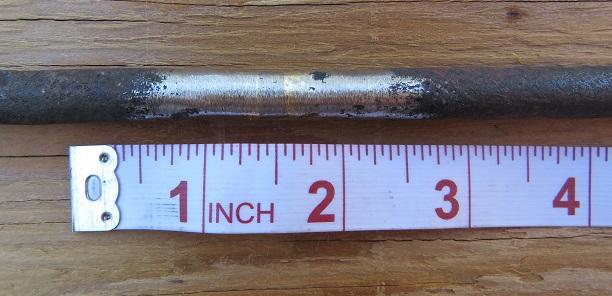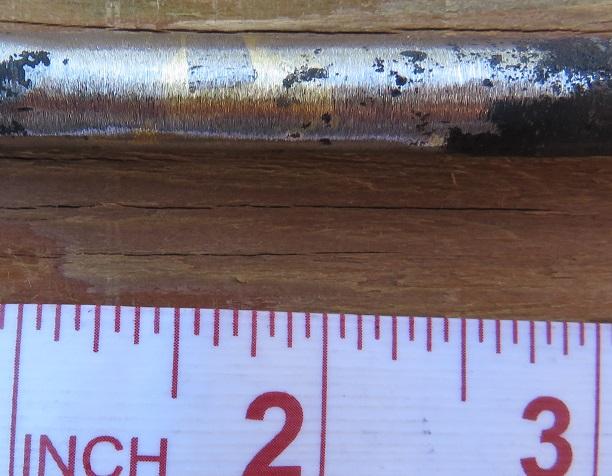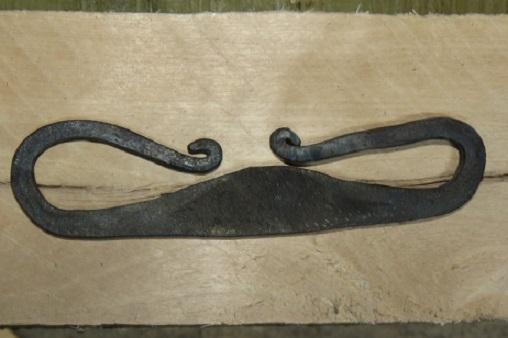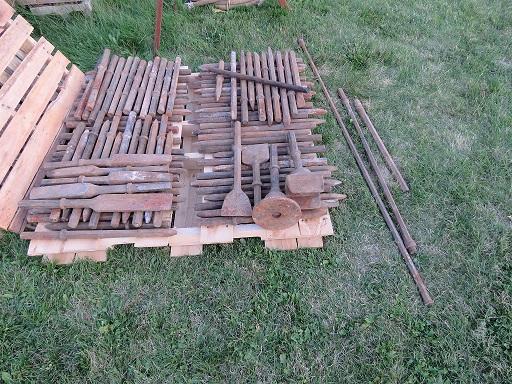
Don Shears
Members-
Posts
122 -
Joined
-
Last visited
Content Type
Profiles
Forums
Articles
Gallery
Downloads
Events
Everything posted by Don Shears
-
Vegetable oil as a quench oil?
Don Shears replied to Car23l's topic in Heat Treating, general discussion
That's a good deal for both of you. You didn't have to buy it and they didn't pay for someone to haul it away. Do be glad they're not a fish and chips place (raccoons will come from miles away) - Don -
Coming in late on this thread; I've noticed no mention of hearing protection (a high possibility I missed it.) Anyways, with my three (now not so young) children I made the point that PPE was to be worn for work in the shop and with power equipment (including when mowing the lawn.) For hearing protection they had the choice to use what they found comfortable, all three chose ear muff style (vice in-ear foam plugs, or the band types.) So give them the no exceptions rule on the PPE, but the choice of which type so long as it meets (your) requirements.
-
These followed me home in the last 10 days: BS Road kill picked up just past a railway crossing - broken leaf spring is 5/16" by 2" stock still with factory paint. Various tools from the local Restore $2 each. As a curiosity the 6" adjustable wrench was made for a farrier supply business. Not shown, the $5 handled cold chisel, hand forged with ~2" wide cutting edge. Nor some the metal pieces from some horse drawn farm equipment I've been given permission to salvage.
-
JHCC - check the National Film Board of Canada website, search for canoe - one film that comes up is "Cesar's Bark Canoe." Could that be the one you saw? Don
-
You know you have been hammering too long...
Don Shears replied to Dewnmoutain's topic in Blacksmithing, General Discussion
Neil; I usually tell folks 'Blacksmiths measure with a micrometer, mark with chalk, cut with a chainsaw, and hammer to fit.' Don -
My best guess is an adjustable width hold-down for a carpenters bench. Cheers, Don
-
Matt; the lower stamping reads to me as Stourbridge, a town in Black County, west of Birmingham (and near Dudley - a major center of anvil production in the UK.) I've done some internet searching and found a listing for an Eveson & Son's anvil on 'Worthpoint' (an antique price tracking site, possibly for ebay?) Anyways with what I can gleam from your pictures, the info on that site meshes with the manufacturer and location. Cheers, Don
-
Forged hooks from the past
Don Shears replied to ausfire's topic in Blacksmithing, General Discussion
To answer "anyone got a Dudley anvil??"; I've got two anvils from Dudley, an Attwood and a Wilkinson. I personally don't have any old hooks. Here (in Ontario, Canada) the farmers and loggers would likely have repurposed those broken or damaged hooks, or tossed them into the scrap resource pile. -
TJD; all the advice above is sound, use PP&E including apron (or welding jacket) and keep the guard on! Adding to the above, make sure that the disks/flap wheel, etc. you're installing has a maximum rpm that meets or better yet exceeds that of the angle grinder. I only have two angle grinders, so disks/wheels change as as tasks require. As a personal habit anytime when a new or partly used disk or wire wheel is (re)installed, with PP&E on, I turn on the AG and let it run without load for at least 30 seconds. If it's not properly installed, or there is a hidden flaw or crack in the disk or wheel it usually shows up as heavy vibration or dramatic failure (Note - keep by-standers at a distance.) I also follow this rule any time I'm away from the grinder for a while (out of sight, coffee/meal breaks, call of nature) or the AG having been in storage/transit for a period of time. Treated with respect, angle grinders are a great and versatile tool to have in one's kit.
-
A quick question on this subject - how do you remove the valves? On the 20 pound tanks are the valves left or right hand threaded? How much force is needed to break the thread seal i.e. 18 inch pipe wrench or a 6 foot cheater bar on a pipe wrench? Cheers; Don
-
JHCC - Thank you for the splicing instructions. I bought a 4 by 108 belt grinder last Oct. but no belts. Suppliers for that size are rare (also I'm minding my cash flow during the current situation.) Your instructions show that the splicing isn't as complex as I'd originally thought. I'd like to confirm the splice angle as 20 degrees (a protractor held onto the laptop screen is only so accurate.)
-
How hot is your coal forge chimney exhaust gas?
Don Shears replied to AlmonteIron's topic in Chimneys, Hoods, and Stacks
After initially reading this thread a few weeks ago, I started keeping a mental record of activity and flue temps at my forge. My forge is coal/coke fueled, bottom draft. Chimney arrangement is a stainless steel 'super-sucker' side draft feeding a galvanized 10 inch HVAC duct going vertical 20 feet. Several years ago I installed a BBQ thermometer about 14 inches above the inlet. I made a SWAG that thermometer accuracy is +/_ 50 F. When working small stock (up to 5/8 inch) indication is between 100 and 150 F. For forge welding with me cranking the blower steadily I can hit around 400 F indicated. -
What did you do in the shop today?
Don Shears replied to Mark Ling's topic in Blacksmithing, General Discussion
Well, like many I've been pretty much doing the isolation thing. And like so many with the warming weather spending more time in my (currently unheated) shop. I've put in time working on several projects. Handle for salvaged brass shovel head; matching poker for the shovel; flux spoon with attempt at brass inflow; repair of a fire poker; wedge for a post vise mount; fire steel; handle for a brush; hanger for bird feeders; and a sample 'S' hook for my wife to approve for her flower baskets. For scale the plywood sheet is about 28 inches wide. The repair of the poker was needed after making it during a demo, I missed seeing a hacksaw cut about mid length. That was last fall so I got over zealous filing the rust out of the cut making it too big to just fill with brazing rod. Solution was to slightly dovetail the notch and make a fill piece from a salvaged square nail for brazing into place. Makes an interesting piece to examine after cleaning up with a file. In early April I picked up as BS roadkill a new, but broken file. By it's condition it was brand new with no signs of use or rusting, but the tang and an inch or two of the teeth had snapped off. This is my first attempt at this style of fire steel, it's roughly 5 inches end to end. Flint, chert, and quartz all draw sparks easily. Even tried a golf ball size clinker and that drew sparks as well! I've several other WIP that I will post pictures of later. Don -
Swedefiddle (Neil), SLAG - I stand/sit corrected, not high carbon, but certainly enough to be hardened. There's been plenty of discussion threads here on IFI about these. Good for making hammers, struck and hardy tools. Quite a few need re-pointing and I haven't done a spark test yet. The idea of talking to a contractor has occurred to me, just haven't followed up. The pneumatic drill rods are cut-offs, of different lengths and flat to flat sizes. I will have to clean out the air/lube channels before doing any cutting/forging. I do not want any nasty surprises. Thomas - congrat's on getting work closer to home. As a sidebar, at another auction I met up with another fellow (a retired geologist) with a disreputable red hat (sans horns!)
-
I had the winning bid on a lot of pavement breaker points and related items at a local auction last week. All up cost was just under CDN$180 (or under $2 a piece) The lot covered two standard (4 ft by 4 ft) pallets. Took me about ten minutes to hand load into my truck with help from one of the staff. The shanks are a mix of 2 1/8 inch and 2 1/4 inch flat to flat hex. There are 69 pyramid points, 13 with cut off ends, 9 chisel points, 5 wedges, 2 spade tips, a tamper, and what I believe to be a pipe or post driver. Also included were 3 pieces if pneumatic drill shaft, a 2 ft long (octagonal stock) chisel, 2 jack hammers, and 4 sections of air line. The challenge now is coming up with a way to store this before the snow arrives. But I now certainly have enough high carbon stock to last me a long time.
-
If you can find a copy of "IRON MENAGERIE" by the Guild of Metalsmiths, the Introduction pages (all two of them) give the shapes and dimensions for the various basic tools* used in shaping decorative animal heads and figurines. * - eye and other punches, fullers, and chisels. Which certainly can be used on other projects.
-
Need a Blacksmith Tool Identified
Don Shears replied to DanNorris's topic in Anvils, Swage Blocks, and Mandrels
My non-scientific guess with no measurements and only one picture (though the pink coffee cup in the background gives some scale) is the moving jaw of a vise, more likely a machinists then woodworkers. -
Good steels for fire steels
Don Shears replied to Bill in Oregon's topic in Blacksmithing, General Discussion
I haven't used files for fire steels. Instead I use (horse drawn) dump rake tines for making both fire steels and small knives/letter openers. Junk yard steel chart lists them as 1090. Can draw decent sparks using chert after a quench in water from orange heat and no tempering. But having read dickb's post, go with the magnet test (more accurate then eye) and quench. Attached are a couple of images. The tines are 5/16 inch dia. Styles obviously differ with manufacturer. The square is 12 inches on the outside of the long arm.
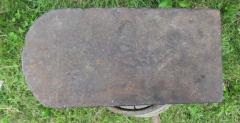
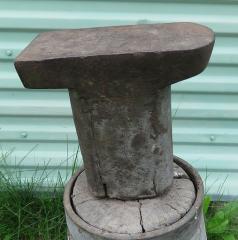
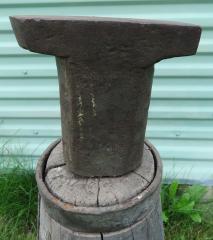
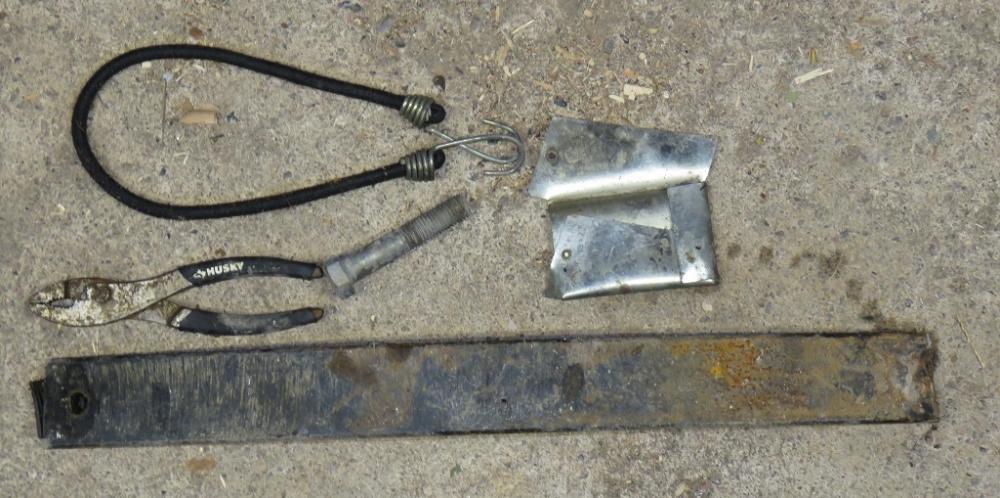
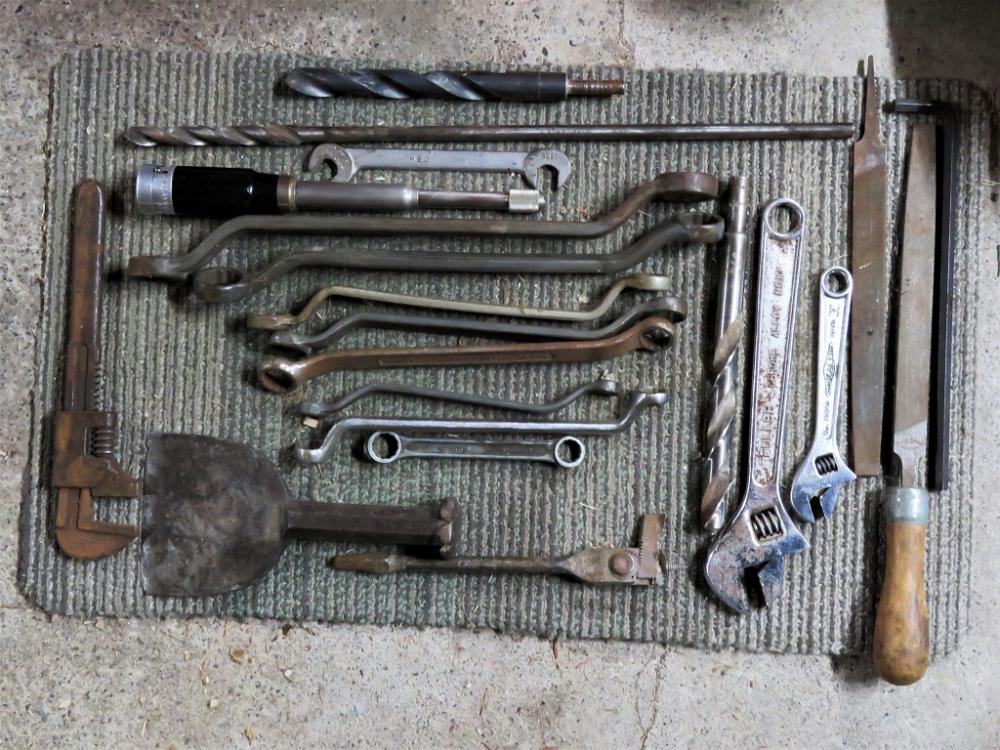
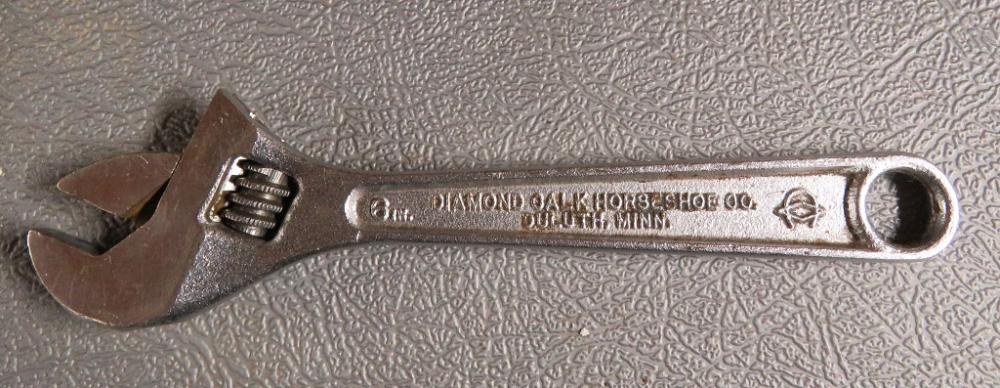
.jpg.3e11faaaf896745a0c6e517f358a74e4.jpg)
